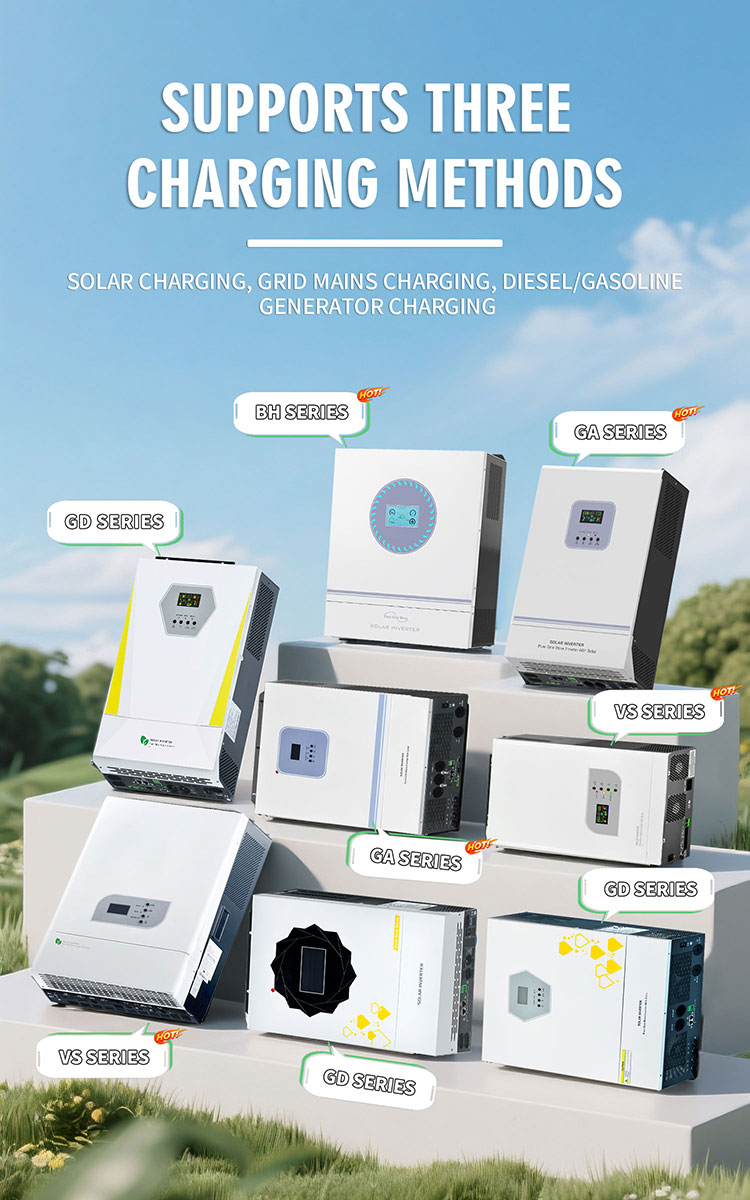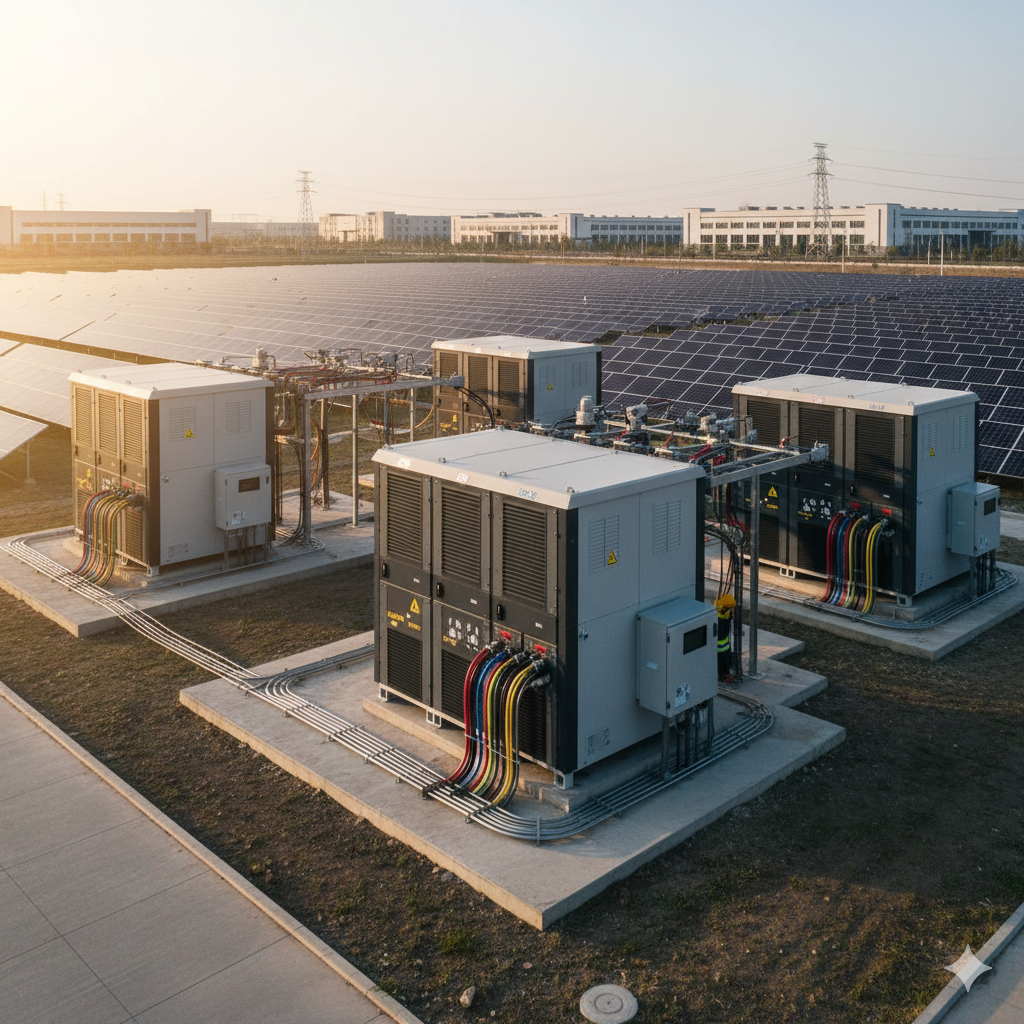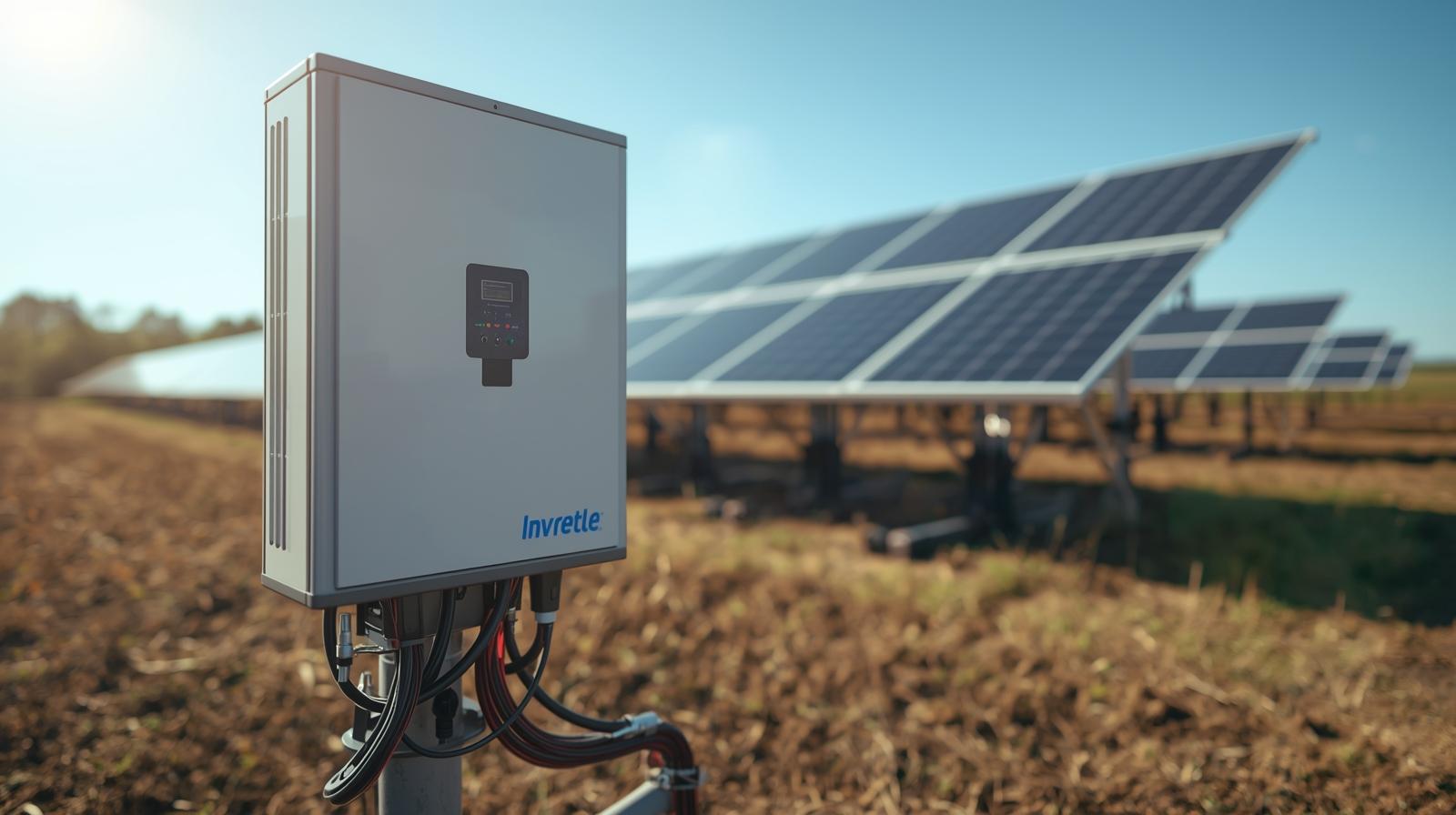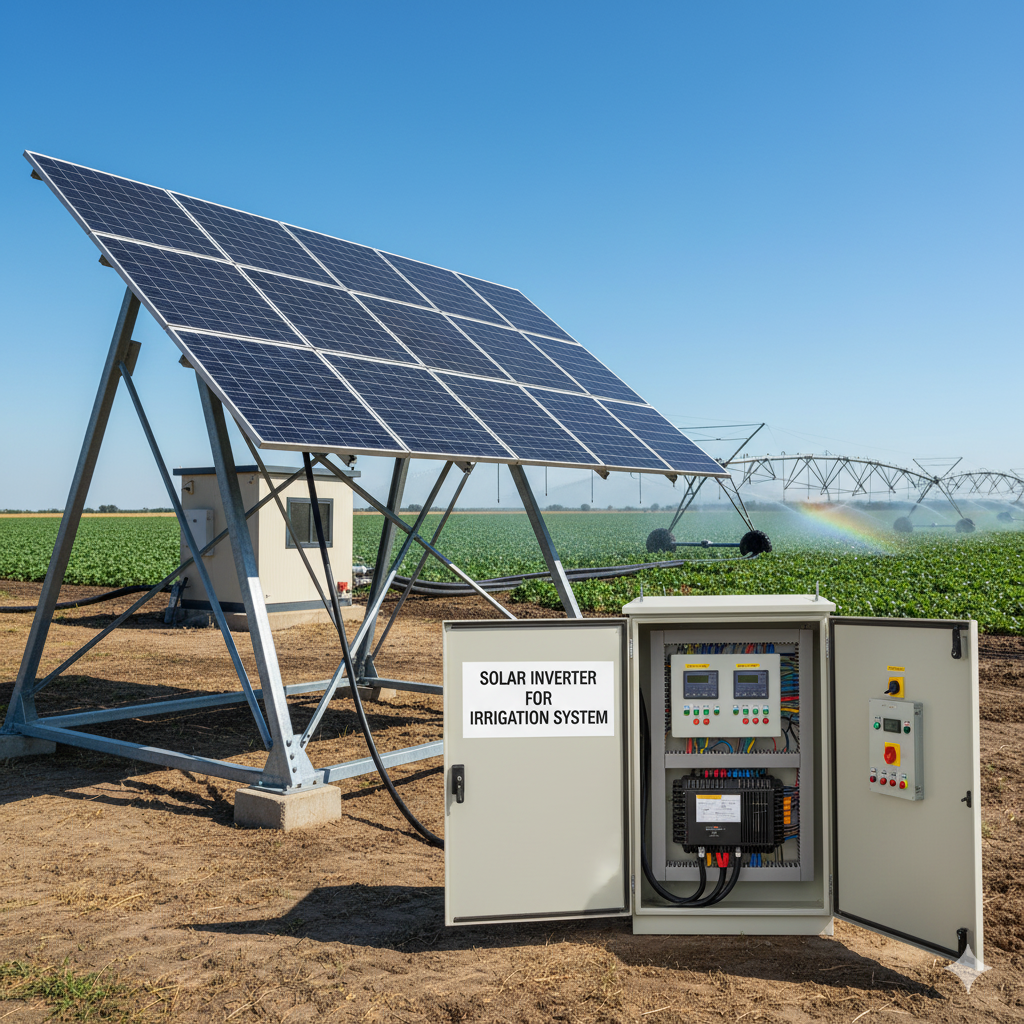
Power Demands of Modern Commercial Spaces
Commercial buildings today consume more energy than ever before — from air conditioning and elevators to lighting, data systems, and security equipment.
Power fluctuations or outages can disrupt operations, affect tenant satisfaction, and increase maintenance costs.
A solar or hybrid inverter for commercial buildings addresses these challenges head-on. By integrating solar generation, grid power, and backup storage into one smart system, it ensures uninterrupted energy supply, lower bills, and improved efficiency.
For property owners and facility managers, it’s no longer just an energy device — it’s a long-term investment in sustainability and operational resilience.
Understanding How Commercial Inverters Work
At the core of a commercial power system, the inverter functions as an intelligent energy router — converting DC from solar panels or batteries into AC power, while coordinating different energy sources to maintain load balance.
| Component | Function | Benefit |
|---|---|---|
| Solar Panels | Generate renewable power | Reduce grid dependency |
| Inverter Unit | Converts and stabilizes power | Keeps systems running efficiently |
| Battery Storage | Stores energy for backup | Maintains uptime during outages |
| Building Management System (BMS) | Controls lighting, HVAC, and load | Optimizes energy consumption |
The inverter interacts with the building’s electrical network, ensuring that critical systems — lifts, air conditioning, servers — continue operating without voltage drops or interruptions.
Engineering Features That Define Commercial-Grade Inverters
Commercial buildings require continuous, stable, and scalable power.
The best inverters in this category include:
-
High Conversion Efficiency (up to 98%) – reducing electricity waste.
-
Three-Phase Output – essential for large HVAC and lighting systems.
-
Peak Load Management – balances real-time consumption during demand spikes.
-
Smart Monitoring – cloud or app-based tracking for facilities teams.
-
Noise-Free Operation – optimized for indoor or rooftop installation.
-
Long Lifespan & Safety Certification – CE, IEC, VDE, UL compliance.
These engineering standards ensure safe, efficient, and silent power for modern commercial spaces.
Solar vs. Hybrid: Choosing the Right Model for Your Building
| System Type | Description | Cost Efficiency | Best Suited For |
|---|---|---|---|
| Grid-Tied Solar Inverter | Connects solar to existing building grid | High ROI, limited backup | Malls & office towers |
| Hybrid Inverter | Combines solar + grid + battery | Higher flexibility & uptime | Hospitals, data centers |
| Off-Grid Inverter | Works independently from utility | Ideal for remote facilities | Resorts, rural complexes |
According to Energy Storage Association (ESA, 2024), hybrid inverter adoption in commercial facilities reduces grid reliance by 30–50%, improving overall system uptime to 99.8% across monitored sites.
Common Use Cases Across Commercial Buildings
-
Office Buildings
-
Maintains power quality for elevators, servers, and lighting systems.
-
Reduces peak-hour electricity charges.
-
-
Shopping Malls and Retail Centers
-
Keeps HVAC and POS systems stable during grid drops.
-
Improves comfort levels for shoppers and tenants.
-
-
Hospitals and Clinics
-
Ensures continuous power for medical equipment and emergency lighting.
-
-
Hotels and Resorts
-
Hybrid systems cut diesel costs for backup generation.
-
-
Educational & Corporate Campuses
-
Central inverter hubs manage distributed solar rooftops efficiently.
-
Each environment benefits from improved energy predictability, cost control, and sustainability credentials.
Finding the Right Inverter for Your Building Type
| Building Type | Recommended Capacity | Features to Prioritize |
|---|---|---|
| Small offices (≤5 floors) | 10–20 kW | Grid-tied inverter, low noise |
| Mid-size commercial buildings | 30–60 kW | Hybrid inverter, remote monitoring |
| Large office towers / malls | 100–300 kW | Multi-string MPPT, high efficiency |
| Hospitals & data centers | 300 kW+ | Parallel connection, UPS-grade backup |
Tip: Always ensure your inverter includes reactive power compensation and anti-islanding protection to comply with building safety codes.
Frequently Asked Questions
Q1: Can solar inverters reduce electricity bills in high-rise buildings?
Yes, by utilizing solar energy during daytime peak hours, the system offsets expensive grid tariffs.
Q2: What happens during grid outages?
Hybrid inverters instantly switch to stored or solar power, maintaining building operations seamlessly.
Q3: Is installation disruptive for tenants?
No, systems can be integrated with minimal downtime using modular setup approaches.
Q4: How long is the payback period?
Typically 3–6 years, depending on solar potential and energy usage profile.
Power Stability as a Business Strategy
For modern commercial buildings, energy reliability is no longer optional — it’s strategic.
A smart inverter system not only stabilizes power but also improves property value, tenant satisfaction, and sustainability ratings.
At Thlinksolar, we design hybrid and grid-tied inverters engineered for complex commercial environments — combining high conversion efficiency, intelligent load management, and international safety standards.
Our goal is to help businesses achieve energy independence without compromising reliability or comfort.
To explore tailored inverter solutions for your building, visit our homepage or reach our team via the contact page.


